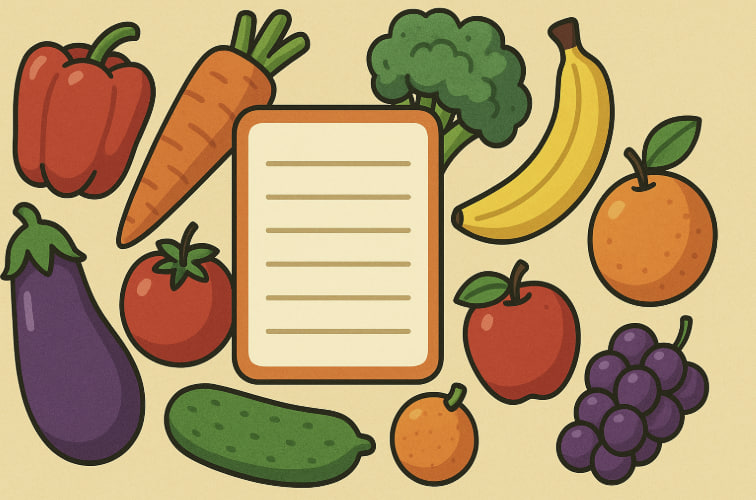Creating a balanced weekly meal plan is one of the smartest ways to support your health, energy levels, and even your budget. With just a little planning, you can avoid last-minute food decisions, reduce food waste, and nourish your body with everything it needs.
But where do you start — and how do you keep it realistic?
Step 1: Understand the Basics of a Balanced Diet
A healthy weekly meal plan includes a variety of nutrient-dense foods that provide:
- Complex carbohydrates (whole grains, legumes, vegetables)
- Lean proteins (fish, poultry, tofu, legumes, eggs)
- Healthy fats (avocados, olive oil, nuts, seeds)
- Vitamins and minerals (through colorful fruits and vegetables)
- Fiber (from whole plant foods)
Try to follow the 80/20 rule: aim for 80% wholesome, minimally processed foods and leave 20% for flexibility or favorite treats in moderation.
Step 2: Plan Around Your Lifestyle
Your plan should reflect your:
- Daily schedule (busy days might need quick-prep meals or leftovers)
- Cooking skills and time
- Nutritional goals (e.g., weight management, muscle gain, gut health)
- Cultural and personal food preferences
- Budget (use seasonal and affordable ingredients)
Use a calendar to block out meals by day and time:
Breakfast – Lunch – Dinner – Snacks
Step 3: Batch Cook and Prep Ahead
Planning doesn’t mean cooking every single dish in advance — but it helps to:
- Pre-chop vegetables and store in containers
- Batch-cook grains or soups for the week
- Freeze portions for future busy days
- Marinate proteins or prep smoothie ingredients
This makes it easier to stick to the plan and prevents falling back on fast food or unhealthy snacks.
Step 4: Variety Is Key
Don’t eat the same three meals every day. Include:
- At least 4–5 different vegetables during the week
- Rotating protein sources (e.g., fish, legumes, poultry, tofu)
- A mix of cooked and raw foods
- Global or seasonal recipes to stay inspired
Step 5: Make a Smart Grocery List
Once your menu is ready, break your shopping list into categories:
- Fresh produce
- Pantry staples (grains, beans, spices)
- Proteins
- Dairy or plant-based alternatives
- Frozen goods
- Extras (snacks, sauces, herbs)
Stick to the list to save time and money.
Sample Weekly Plan (Simplified)
| Day | Breakfast | Lunch | Dinner |
|---|---|---|---|
| Mon | Oatmeal + fruit | Lentil soup + salad | Grilled fish + veggies |
| Tue | Eggs + avocado | Chicken wrap | Tofu + rice |
| Wed | Smoothie | Quinoa bowl | Turkey chili |
| Thu | Yogurt + seeds | Veggie pasta | Salmon + greens |
| Fri | Pancakes + nuts | Leftover chili | Veggie curry + rice |
Glossary
- Meal plan — a structured schedule of meals and snacks over a set period
- Batch cooking — preparing large quantities of food at once for later use
- Complex carbohydrates — slow-digesting carbs that provide long-lasting energy


